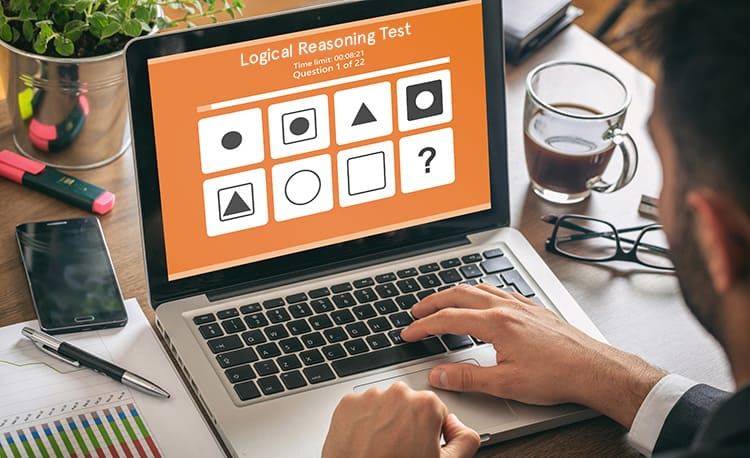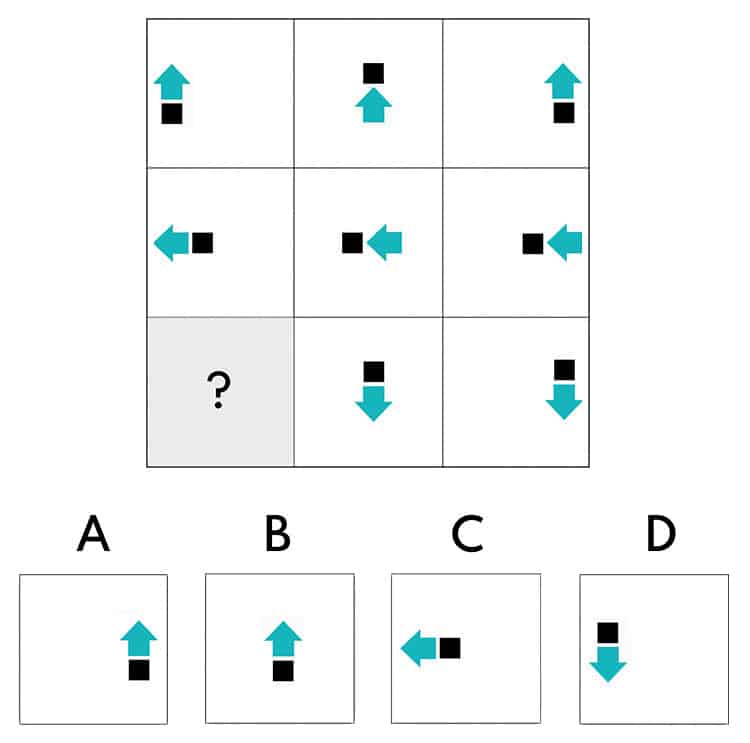Logical Reasoning Test: The Ultimate How-to-Pass Guide
Got a logical reasoning test to prepare for? We’ll get you assessment-ready in no time. Keep reading to learn everything that’s involved in a logical reasoning test, what to expect, and how to practice so that you pass with flying colours.
In this free logical reasoning test guide we will show you:
- 4 simple secrets for logical reasoning test success
- 5 must-know test types
- Logical reasoning test example questions (with answers)
You can find some of the industry’s best logical reasoning practice tests here.
What is a logical reasoning test?
Logical reasoning tests aren’t just one single aptitude test, but a group of five different types: inductive reasoning, deductive reasoning, abstract reasoning, diagrammatic reasoning and critical thinking.
If you’ve been specifically asked to take a logical reasoning test, then it could mean a combination of any or all of the five different logical reasoning tests.
These tests measure your problem solving ability, and how well you can understand and interpret patterns. While logical reasoning tests are sometimes referred to as non-verbal tests, this is technically incorrect — questions can be both verbal and non-verbal in nature, depending on which type of test you’re taking.
So, to pass your logical reasoning test, you need to be equally confident working with both numerical and written information.
The role of logical reasoning tests in job selection
Logical reasoning tests are common in the recruitment process for a wide range of industries because they can give valuable insights into your suitability for a certain role. Essentially, employers want to know if you can think logically and draw reasonable conclusions — and these tests will tell them that.
Skills like these are beneficial in practically every niche and job type, so it’s not unusual to see logical reasoning tests used at both graduate and management level, and for many technical, finance and IT-based roles.
What to expect in a logical reasoning test
There are a few different ways you might be asked to take your logical reasoning test, depending on the employer. It might be a pre-interview test, or it could be during the interview or at an assessment event.
You’ll take it under timed conditions, and it can be either online or paper-based (though online is far more common these days). Logical reasoning test questions are multiple-choice and specific to the role you’re applying for.
The test can cover up to five different areas:
1. Inductive reasoning
Assesses your ability to reach a general conclusion based on patterns or data.
Check out our inductive reasoning test guide for more about this type of assessment and how to pass it.
2. Deductive reasoning
Assesses your ability to reach a specific conclusion based on patterns or data.
Our deductive reasoning test guide has more details, along with practice questions, tips and strategies to help you answer deductive reasoning questions.
3. Abstract reasoning
Assesses your spatial understanding and how well you can interpret patterns in objects or shapes.
Get a better idea of what to expect with the example test questions and expert advice in our abstract reasoning test guide.
4. Diagrammatic reasoning
A type of abstract reasoning that specifically assesses how you interpret patterns in diagrams.
You’ll work with a combination of letters and numbers to draw conclusions and solve problems. Check out our diagrammatic reasoning test guide for more!
5. Critical thinking
Assesses your ability to understand, evaluate and analyse written arguments.
This is where the verbal side of logical reasoning really comes in. Our verbal reasoning test guide has plenty of tips and advice to help you pass language-based aptitude tests.
Logical reasoning test examples (with answers)
Question 1
Let’s take a look at some examples of real logical reasoning test questions to give you a better idea of what you’re up against.
First up, a non-verbal logical reasoning test practice question:
Which of the given shapes would complete the sequence?
ANSWER
The correct answer is D.
How to solve question 1
The best way to approach these questions is to examine each shape or object in the sequence so that you can rule out the incorrect answers. Here, you can see that all the triangles in the bottom row are pointing downwards, which immediately rules out answers A, B and C.
Question 2
Now, a verbal logical reasoning test practice question from JobTestPrep:
ANSWER
The correct answer is A.
How to solve question 2
Verbal questions can be overwhelming when you first look at them, but you’ll find them to be much less so if you focus on just one statement or answer at a time. Here, you can work out that A must be a false statement because 60% of cabbages were red and 50% were big.
However, even if the first answer seems to be immediately correct, it’s still a good idea to verify the rest of the statements too.
Logical reasoning test video tutorial
Here is Part 1 of a handy logical reasoning test video tutorial from Assessment Day. Grab a pen and notepad to make some notes…
You can find Part 2 here and our recommended logical reasoning practice tests here.
How to pass a logical reasoning test: 4 pro tips
#1. Do your homework beforehand
Because logical reasoning tests can vary so much, it’s vital that you know the specific details of yours before you start preparing for it. That means a few things, including:
- Which type/s of logical reasoning tests you’ll be taking,
- The format of the test (when and where, time limits, online or paper-based, etc.), and,
- The test provider that created the test. Some of the most common are SHL, Talent Q, Saville, Cubiks and Kenexa.
Once you know all this information, you can replicate the test conditions to spend your preparation time more wisely.
#2. Take logical reasoning practice tests
This is extremely important, but it’s just as important to seek out logical reasoning practice tests from the same provider that created the one you’ll be taking, because there are slight differences between them.
Keep practising until you’re completely comfortable with the question types, format and test conditions, and can confidently answer questions in less than one minute.
(Don’t forget you can get all the practice tests you need here.)
#3. Learn the most effective solving strategies
When you find yourself stumped on a difficult question, it can be helpful to approach it from a different angle. Practise using these strategies:
- For non-verbal logical reasoning questions, there’s often extra information in there to make it more confusing. Examine each element (shape, object, data point, etc.) individually to help you determine what’s important to the question and what can be ignored.
- For verbal logical reasoning questions, focus on the potential answers instead of the question. Scan the question in the context of each potential answer to rule out the incorrect ones.
#4. Be your best on the day
You success ultimately comes down to how prepared you are for your test, both mentally and physically. Plenty of practice will prepare your mind and make sure you know what you need to know, but you won’t be able to apply that knowledge on assessment day if you’re not in good physical shape too.
So, get a full night of sleep the night before. Avoid alcohol so that you wake up fresh and clear-headed.
Eat a good breakfast and stay hydrated throughout the day. Breathe and meditate to calm your mind and keep your nerves under control.
They’re small things, but they can have a big impact!
Some more guides to help you succeed…
- Numerical Reasoning: Numerical Reasoning Test Guide: 5 Proven Tips to Succeed
- Verbal Reasoning: Verbal Reasoning Test: What You Need to Know to Pass
- UKCAT: UKCAT Test Guide: 4 Secrets to UKCAT Success 2020
- Watson-Glaser: Watson-Glaser Test: Everything You Need to Know to Pass
- Mechanical Comprehension: Mechanical Comprehension Test Guide 2020






